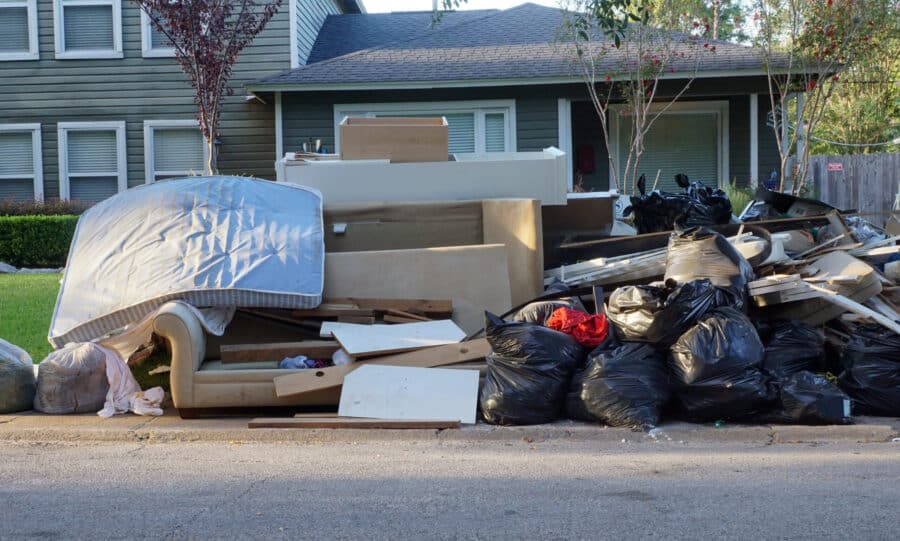
You might not think twice about tossing those used-up batteries into your kitchen trash, but hold that thought. Batteries contain heavy metals and corrosive materials that, when sent to landfills, don’t just vanish harmlessly. They seep. Into soil. Into groundwater. Into the very veins of our environment. The consequences are silent but deeply destructive, poisoning ecosystems and putting communities at risk without a traceable warning.
Most people underestimate just how problematic a small object can be. But batteries—those pocket-sized powerhouses—don’t go quietly. They spark fires in landfills and waste facilities. They defy decay. Proper recycling through hazardous waste programs or drop-off locations becomes more than a good deed; it’s a necessity wrapped in moral urgency. So don’t bury the danger—dispose of it wisely.
The Invisible Threat Lurking Inside Your Old Electronics
You’ve upgraded your phone. Maybe your TV, your laptop, your stereo system. But what happens to the old devices? Dumping electronics in the trash may seem like the simplest option, yet beneath their polished exteriors lies a cocktail of toxic substances. Lead, cadmium, mercury—these aren’t harmless ingredients. They’re environmental time bombs waiting to detonate upon contact with landfill conditions.
Electronics shouldn’t vanish into plastic bags because their components were never designed to decompose. Their lives extend beyond usefulness, in dark ways that pollute air and water. Recycling e-waste ensures that precious metals are recovered and toxins are kept at bay. Don’t let your devices turn against the earth once they leave your home. Choose to recycle with purpose, because out of sight should not mean out of mind.

That Leftover Paint Is More Dangerous Than You Think
Tucked away in garages and basements, old paint cans sit like forgotten relics of renovation past. But when the urge to declutter strikes, resist the temptation to casually pitch them. Paint—especially oil-based varieties—contains volatile organic compounds that are anything but friendly to the environment. Once in a landfill, they leak, they fume, and they pollute with persistent malice.
Beyond the fumes and the mess lies the core issue: mismanaged disposal. Paint should go to specialized facilities or be absorbed safely via donation programs. Even dried-out cans can carry residues harmful enough to merit concern. Treat them with the caution they deserve. Because behind their colorful promise lies a threat too potent to ignore.
Throwing Out Fluorescent Bulbs Can Dim the Planet’s Future
They may look delicate and harmless, but fluorescent bulbs conceal a sinister truth—mercury. A single broken bulb releases this neurotoxin into the environment, and when discarded in general trash, that damage is multiplied. Inside landfills, the problem compounds, leaching toxicity into the atmosphere and groundwater like a creeping shadow.
Recycling fluorescent lighting isn’t just smart; it’s an act of preservation. Collection programs and drop-off points exist for this very reason. These bulbs deserve a careful ending, not a careless toss. By taking a detour from the trash, you prevent contamination that stretches far beyond your home. Light should guide, not harm. Handle these glowing threats with deliberate thought.
Medications Don’t Belong in the Waste Stream
Safe Medicine Disposal
Proper medication disposal is more important than it may seem. When pills are flushed or tossed into the trash, their active ingredients can seep into soil and water, harming ecosystems and even contaminating drinking water supplies. Fortunately, there are simple, effective ways to safely get rid of expired or unused medicine without putting the environment at risk.
Use local drug take-back programs
Most communities now offer drug take-back programs that collect unwanted medications year-round or during special events. These initiatives are designed specifically to prevent pharmaceuticals from entering landfills and waterways. Drop-off locations can often be found at police stations, health departments, or designated kiosks. It’s a free, anonymous way to ensure your medicine is handled with care and responsibility.
Return medications to participating pharmacies
Many pharmacies participate in take-back partnerships that allow customers to return unused or expired medications at no extra cost. Some have secure drop boxes, while others will take returns at the counter. This method ensures that the drugs are safely incinerated or disposed of according to federal regulations. It’s a convenient option that keeps harmful substances out of circulation.
Follow FDA disposal instructions
Some medications come with specific disposal guidelines printed right on the label or included in the packaging. These instructions are tailored to prevent harm to people, pets, and the environment. For instance, certain high-risk drugs may be approved for flushing to prevent misuse. Always check for disposal instructions first, as they offer the safest course of action for each medication.
Mix with undesirable substances before trashing
If take-back or pharmacy return options aren’t available, the FDA recommends making medications unappealing before discarding them in the trash. Mix pills or liquids with coffee grounds, dirt, or cat litter, then place the mixture in a sealed plastic bag before throwing it away. This helps prevent accidental ingestion by children, pets, or anyone who might rummage through your trash.
Never flush unless explicitly instructed
Although flushing may seem like a quick fix, it’s generally discouraged unless the medication specifically instructs it. Flushed drugs often bypass sewage treatment facilities and end up in rivers and lakes, disrupting aquatic life and contaminating water sources. Only a select list of medications, such as certain narcotics, should ever be flushed—and only when the label clearly states so.
Household Cleaners Shouldn’t Share a Dumpster Fate
That half-empty bottle of bleach or abandoned jug of drain cleaner may seem harmless, but household chemicals often harbor ingredients as harsh as industrial toxins. When tossed in the trash, they mix dangerously with other waste, creating reactions that are volatile and unpredictable. Fires, toxic fumes, and groundwater pollution are all on the table.
The solution lies in community hazardous waste collection programs. These products need to be treated with respect, handled like the chemical agents they are. It’s not just about personal safety—it’s about environmental stewardship. In a world trying to heal, we can’t afford reckless waste. Cleaners should clean, not contaminate. Don’t let their final act be one of destruction.
Why Tires Don’t Belong in Your Weekly Trash Pickup
Old tires aren’t just bulky eyesores—they’re ticking time bombs when mishandled. Once buried in landfills, they trap methane gases, eventually rising to the surface, breaking landfill liners, and creating space-hogging hazards. Their hollow form becomes breeding grounds for pests, and their materials are notoriously difficult to compact.
The truth is, tires demand a different path. Tire recycling centers or retailer take-back programs are built to repurpose them into playground materials, fuel, or construction inputs. It’s a second life with real value. When discarded improperly, tires become nature’s burden. When redirected properly, they turn into tomorrow’s resources. Don’t underestimate the circle of waste—what you roll away today rolls back tomorrow.
Cooking Oil Should Never Flow Toward the Garbage
After frying up a storm, it’s tempting to dump used cooking oil down the drain or into the trash. Resist. That greasy decision may seem innocent but leads to clogged sewer systems, contaminated water supplies, and environmental strain that doesn’t wash away easily. Cooking oil behaves like a stealthy saboteur, blocking pipes and feeding rats.
Instead, collect your cooled oil in a sealed container and bring it to a proper disposal site. Many cities offer recycling programs that convert oil into biofuel—turning waste into energy. When handled right, your leftovers can ignite sustainable futures. But when mishandled, the damage is slippery, costly, and nearly impossible to reverse. Handle it like the volatile agent it is.
Thermometers and Old Devices Carry Mercury’s Legacy
Mercury thermometers and older devices might seem outdated and benign, but they carry a metallic ghost that still haunts ecosystems. Just one broken item can release mercury vapors or particles into the air or soil, poisoning with quiet precision. This liquid metal does not fade with time—it accumulates, traveling through fish, animals, and people.
You need more than a trash can to contain this threat. Hazardous waste collection is your best ally in safe disposal. The past may have accepted mercury casually, but the future demands caution. A thermometer is meant to measure health, not erode it. A careless toss can undo decades of environmental protection. Handle it wisely, for everyone’s sake.
Bleach and Ammonia Mix More Danger Than You Think
Some items double down on danger when combined—and bleach or ammonia are chief among them. Tossed together in a trash bag, their vapors can create toxic clouds akin to chemical warfare. The result? Threats to sanitation workers, landfill staff, and even your household, should fumes leak before disposal.
These chemicals must be handled as hazardous waste. Community facilities exist for just this reason: to intercept risk before it becomes disaster. It’s easy to see them as ordinary cleaners, but their chemistry tells another story. Trash is no place for dangerous mixtures. One careless act can unleash chaos. Responsible disposal ensures that safety and sanitation remain allies, not enemies.
Conclusion
Every item we toss carries more than its weight in trash—it carries impact, consequence, legacy. Some things simply don’t belong in a landfill. The threats they pose stretch far beyond our backyards, and the solutions, while accessible, require awareness and intention. Whether it’s electronics laced with heavy metals, cleaning agents that poison, or batteries that ignite silent fires, our choices ripple through the environment long after collection day.
If you’re unsure how to properly dispose of hazardous, bulky, or questionable items, turn to professionals who know the route to safety and sustainability. 606 Junk Removal and Dumpster Rental, based in Chicago, IL, is your local guide to ethical, efficient waste solutions. Reach out at 773-412-4902 or email info@606junk.com for responsible junk handling that leaves no toxic trace behind.
